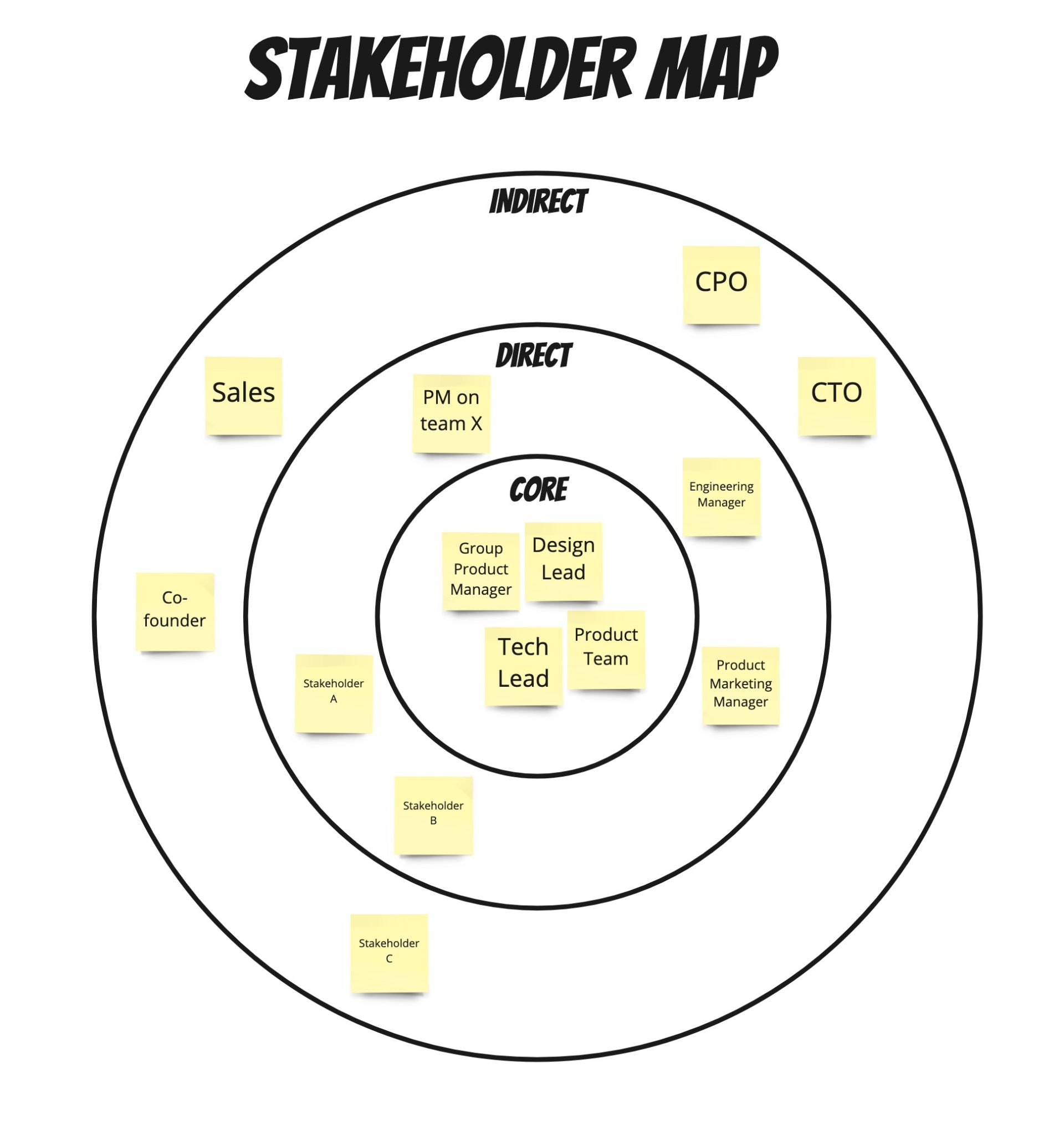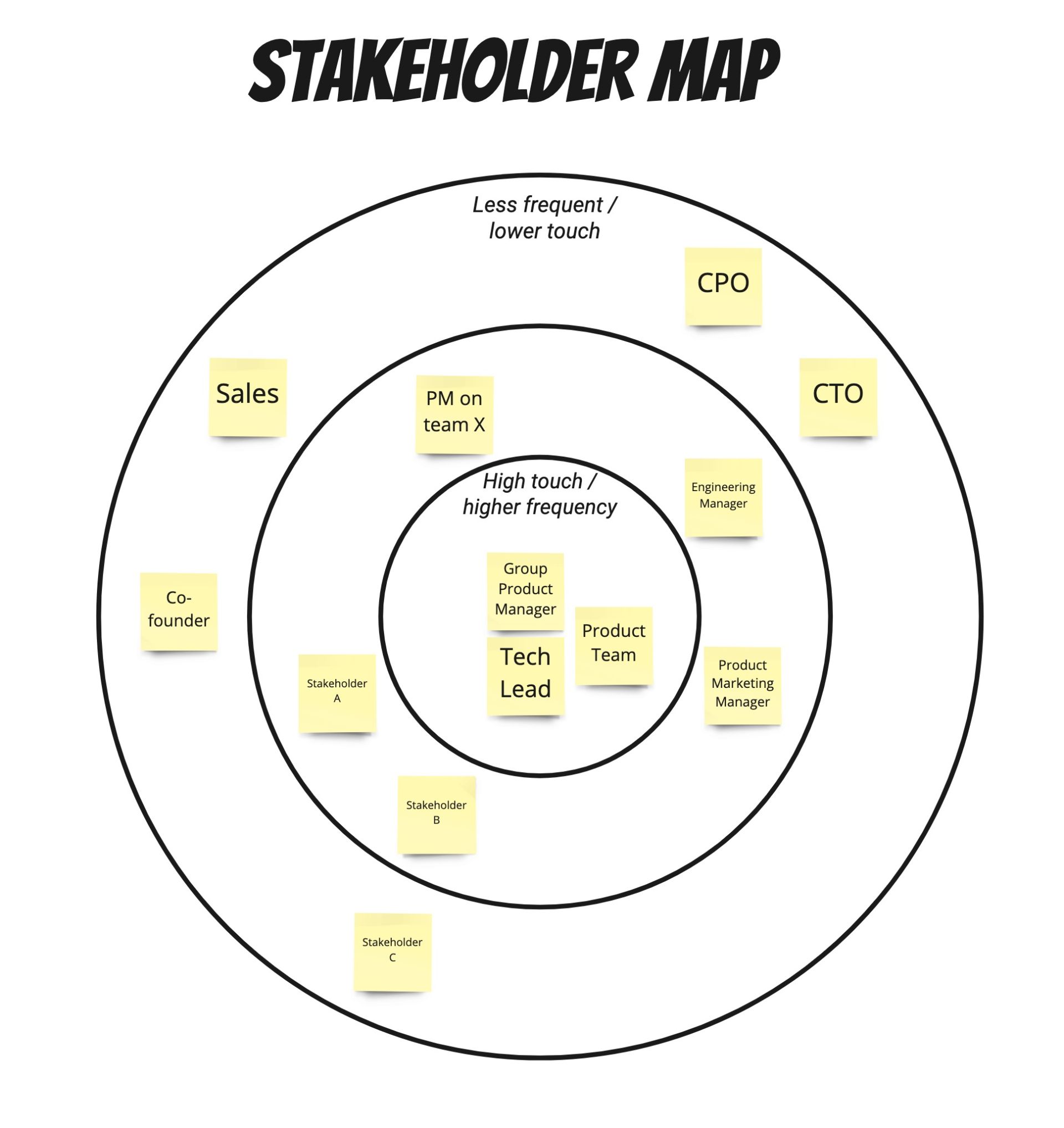This is my go-to Stakeholder Mapping technique. It's lightweight, easy to use and extremely powerful.
Not only does this technique help you rapidly categorize your stakeholders it can also be used to help guide you on how to engage and interact with different stakeholders.
Start by drawing 3 concentric circles.

Starting at the centre, each circle will represent:- CORE Stakeholders
- DIRECT Stakeholders
- INDIRECT Stakeholders
Core Stakeholders are stakeholders who have a very high involvement in your product/area.
You can think of core stakeholders as those who have the biggest impact in your product/area. Often this translate to your product being their the primary focus or are directly involved as their day-job.
Examples of core stakeholders are often:
- Team members,
- Key sponsors who are involved day-to day
- Your direct manager,
Direct stakeholders have a high-to-medium involvement in your product/area.
This often means that your product is one of their top focuses but not their primary one. Primary would make them a core stakeholder.
Direct stakeholders often have a 'day job' outside of your product. I.e. a consuming team that needs to consume your work would be a direct stakeholder. They have their own product area to look after but being dependent or consumers of yours would make them directly impacted by your work.
Indirect stakeholders have a low involvement in your product/area.
These stakeholders are ones which have an interest in your area but it's only one of many interests.
Examples of indirect stakeholders might be:
- Legal, Risk, etc departments
- CEO or C-suite
- Other teams which aren't directly impacted by your work but may have an interest in it (i.e. for consistency or reuse reasons)
This format can be a valuable tool to facilitate
how you might engage with your stakeholders.For example, those towards the centre (Core Stakeholders) will be your key stakeholders whom are heavily involved in your product. This means that you should aim to engage with them on a high frequency.
Further, given their importance these core stakeholders will also often require a 'high touch' method of engagement.
Examples of 'high touch' forms of engagement would be face-to-face meetings, collaboration sessions, 1:1s, etc.
On the other hand, those towards the outside (Indirect Stakeholders) have a lower involvement and concern about your product/area and therefore you can often get away with engaging with them in a light touch and infrequent method.
Examples of 'low touch' engagement methods would be showcases, weeknotes, newsletter or update style emails.

So when determining ways to engage with your stakeholders on your stakeholder map, remember that those towards the centre (core stakeholders) will require a high frequency and high touch method. And those towards to edges (Indirect Stakeholders) you can get away with a low frequency and low touch method.
Because whether we like it or not, not all stakeholders are created equal, and some will need higher touch and more frequent engagement and others less.It can be dangerous to treat all stakeholders equally.




